Botany in Tuscany

The early rediscovery of the ancient world and its works determined, in Florence and the rest of Tuscany, the formation of a tradition of botanical studies exemplified on the rigorous taxonomical models of Dioscorides and Theophrastus. Monumental tokens of this renewed science are several of the oldest Botanical Gardens, veritable living museums destined to study and research. The ancient tradition is still vital today, as demonstrated by the numerous specialised green areas scattered throughout the entire region.
Botany in the Middle Ages
In the Middle Ages, man’s relationship with nature was often characterised by superstition and popular beliefs. In Tuscany, for example, it was believed that fried fleabane leaves given to a pregnant woman protected the newborn child from fractures; or it was believed that verbena was an excellent remedy for headache but only if picked on the feast day of San Giovanni. A significant role in the scientific development of medieval botany was played by monastic orders. The botanical and pharmaceutical tradition, in particular, was developed thanks to the institution of the Hortus simplicium [medicamentorum] or Hortus medicus, an area inside the monastery reserved to the cultivation of semplici (simple officinal herbs, that is to say unrefined, while the composti were instead semplici combined to obtain medicines). Adjoining the gardens were the armaria pigmentariorum, precursors of the first monastic pharmacies, where the various officinal plants were preserved and dried.
Botany in the Age of Humanism
The widespread popular beliefs of the Middle Ages were challenged in the course of the 15th century. In the age of Humanism, the attention for classical authors favoured the recovery and study of Pliny, Dioscorides and Theophrastus. The precious codex of the encyclopaedic Naturalis historia, compiled by the Roman scholar Pliny the Elder and today conserved in the Biblioteca Medicea Laurenziana, was purchased by Cosimo the Elder in LŘbeck, and then vernacularized by Cristoforo Landino, while Secretary of the Florentine Republic, Marcello Adriani translated the De Materia Medica by the Greek physician Dioscorides.
The Age of Botanical Gardens
In the first half of the 16th century, a series of works came to light in Europe, which updated the medieval tradition and laid the bases for a more modern study of the natural sciences. These included the very fortunate Commentaries on Dioscorides by Sienese physician Pier Andrea Mattioli, and the De historia stirpium by Leonhart Fuchs from Germany, considered the father of modern botany. Around 1540, Cosimo I de’ Medici offered Fuchs the chair of "Simple Medicaments" that had been recently instituted at the University of Pisa. After the refusal of the German naturalist, the Grand Duke entrusted the chair to physician Luca Ghini from Imola. Ghini was also assigned the task of instituting a Giardino dei Semplici (medicinal herb garden) in Pisa in 1544 in order to satisfy the didactic and research demands of the University. This is the oldest botanical garden joined to a university structure, instituted in Europe. Immediately thereafter, in 1545, Cosimo I instituted the Giardino dei Semplici of Florence, while a herb garden adjoining the Santa Maria della Scala Hospital in Siena was founded in 1588.
-
 Museo Botanico dell'UniversitÓ degli Studi di Pisa [University of Pisa Botanical Museum]
Museo Botanico dell'UniversitÓ degli Studi di Pisa [University of Pisa Botanical Museum] -
 Museo di Storia Naturale di Firenze - Orto Botanico 'Giardino dei Semplici' [Museum of Natural History of Florence - 'Giardino dei Semplici' (medicinal herb garden)]
Museo di Storia Naturale di Firenze - Orto Botanico 'Giardino dei Semplici' [Museum of Natural History of Florence - 'Giardino dei Semplici' (medicinal herb garden)] -
 Orto Botanico dell'UniversitÓ degli Studi di Pisa [Botanical Garden of the University of Pisa]
Orto Botanico dell'UniversitÓ degli Studi di Pisa [Botanical Garden of the University of Pisa] -
 Cosimo I de' Medici
Cosimo I de' Medici
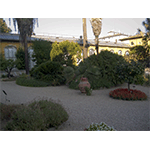
Botany in the 16th Century
Ghini’s lessons in Pisa were followed by the greatest naturalists of the time. One of his students, Andrea Cesalpino from Arezzo, began a classification of plants on a speculative, and not practical, basis, thus founding systematic botany. Interests for the plant world, however, were not limited to university halls and botanical gardens. While lessons on the cultivation of the olive tree were held at the Florence Academy, around the mid 16th century, the priest Michele Merini from Lucca collected a herbarium, today in the Botanical Museum of Florence, with specimens from the Gardens of Medicinal Plants of Pisa and Florence. Other passionate floriculturists were Niccol˛ Gaddi, Matteo Caccini – whose garden on the Borgo Pinti in Florence was known throughout Europe – and Agostino Del Riccio, author of an important treatise on agriculture, and today in the Biblioteca Nazionale Centrale di Firenze (BNCF). With the patronage of the grand duke, the Fleming Giuseppe Casabono undertook an important botanical expedition to the island of Crete.
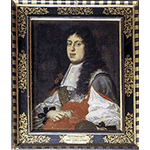
The Age of Cosimo III de' Medici
During the long reign of Cosimo III de’ Medici, the botanical garden of Florence was greatly developed by Paolo Boccone. In 1674, director of the garden in Pisa Pietro Nati described the "bizarrerie", a hybrid plant derived from a citron tree and an orange tree, born in 1640 in the Panciatichi garden near the Torre degli Orti. Precious plant and animal exhibits could be found in the renowned private museums of Targioni Tozzetti in Florence and of Tiberio Scali in Livorno.
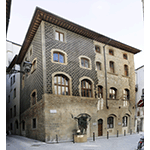
Botany in the Eighteenth Century
The Florentine Botanical Society, the first botanical academy in Europe, was born in 1716. Its founder Pier Antonio Micheli, a scientist of European fame, was in contact with the greatest botanist of the time. His manuscript works conserved in the Biblioteca Nazionale Centrale di Firenze (BNCF) are one of the most significant documents for the history of eighteenth-century Tuscany scientific thought. At his death in 1736, his precious natural science collections were acquired by his follower Giovanni Targioni Tozzetti.
á
In the course of the Age of Enlightenment, thanks to the Lorraine government policies, natural sciences received a considerable boost. In 1723, Michelangelo Tilli published the catalogue of plants in the Giardino dei Semplici (garden of medicinal herbs) of Pisa, while Targioni Tozzetti published the catalogue of the Giardino dei Semplici of Florence in 1748. At the Abbey of Vallombrosa, don Bruno Tozzi and other monks studied and artfully depicted the region’s plant species. The Accademia dei Georgofili, the first agrarian academy in Europe, was founded in Florence in 1753. The year after, a Botanical Academy was created in Cortona, and the University Botanical Garden was instituted in Siena in 1784.
-
 Abbazia di Vallombrosa [Abbey of Vallombrosa]
Abbazia di Vallombrosa [Abbey of Vallombrosa] -
 Accademia dei Georgofili [Georgofili Academy]
Accademia dei Georgofili [Georgofili Academy] -
 Museo di Storia Naturale di Firenze - Sezione di Botanica [Florence Museum of Natural History - Botanical Section]
Museo di Storia Naturale di Firenze - Sezione di Botanica [Florence Museum of Natural History - Botanical Section] -
 Orto Botanico dell'UniversitÓ degli Studi di Siena [Botanical Garden of the University of Siena]
Orto Botanico dell'UniversitÓ degli Studi di Siena [Botanical Garden of the University of Siena] -
 Giovanni Targioni Tozzetti
Giovanni Targioni Tozzetti
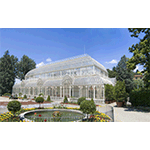
Botany in the Nineteenth Century
In the early 19th century, university teaching in natural history was subdivided into zoology, comparative anatomy, geology, mineralogy and botany. These subjects thus acquired the status of autonomous disciplines. In Florence, botany was taught by Ottaviano Targioni Tozzetti. In Pisa, Gaetano Savi taught botany and directed the botanical garden. Duchess Maria Luisa of Bourbon promoted the creation of a botanical garden in Lucca in 1820. Studies in agriculture decisively developed thanks to Cosimo Ridolfi, Raffaello Lambruschini and Lapo de’ Ricci, founders of the Giornale Agrario. In 1842, on the morrow of the third meeting of Italian Scientists held in Florence, Filippo Paralatore formed the first national botanical collection of herbarium samples at the Botany Museum of Florence, while the SocietÓ Toscana dell'orticultura [Tuscan Horticultural Society] was instituted in 1854.
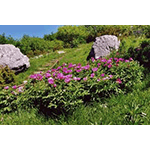
Recent Botanical Gardens
After stopping off at the historical botanical gardens in cities (Pisa, Florence, Siena and Lucca), the itinerary can continue, to good purpose to the more recently instituted gardens. Near Portoferraio on Elba Island is the location of the "Ottonella" and "Ottone" Botanical Gardens, early examples of acclimatization gardens, born between the late 19th and early 20th centuries, through the efforts of scientist, photographer and collector Giorgio Roster. Also on the island, in a setting of great beauty and naturalistic interest, is the small and handsome Medicinal Herb Garden of Elba. The mountains also propose fascinating sites for the study and dissemination of botany: "Frignoli" Botanical Garden, "Pietro Pellegrini" Botanical Garden, "Pania di Corfino" Garden, all on Apuane Alps territory; the Abetone Forestal Botanical Garden in the Pistoian Mountains; the "Carlo Siemoni" Historical Arboretum and Forestal Museum in Casentino, and the Experimental Arboretums of Vallombrosa.
-
 Arboreti Sperimentali di Vallombrosa [Experimental Arboretums of Vallombrosa]
Arboreti Sperimentali di Vallombrosa [Experimental Arboretums of Vallombrosa] -
 Arboreto Storico e Museo Forestale 'Carlo Siemoni' ['Carlo Siemoni' Historical Arboretum and Forestal Museum]
Arboreto Storico e Museo Forestale 'Carlo Siemoni' ['Carlo Siemoni' Historical Arboretum and Forestal Museum] -
 Ecomuseo della Montagna Pistoiese - Orto Botanico Forestale dell'Abetone [Eco-museum of the Pistoian Mountains - Abetone Forestal Botanical Garden]
Ecomuseo della Montagna Pistoiese - Orto Botanico Forestale dell'Abetone [Eco-museum of the Pistoian Mountains - Abetone Forestal Botanical Garden] -
 Orto Botanico dei Frignoli ['Frignoli' Botanical Garden]
Orto Botanico dei Frignoli ['Frignoli' Botanical Garden] -
 Orto Botanico delle Alpi Apuane 'Pietro Pellegrini' ['Pietro Pellegrini' Botanical Garden of the Apuane Alps]
Orto Botanico delle Alpi Apuane 'Pietro Pellegrini' ['Pietro Pellegrini' Botanical Garden of the Apuane Alps] -
 Orto Botanico 'Pania di Corfino' ['Pania di Corfino' Botanical Garden]
Orto Botanico 'Pania di Corfino' ['Pania di Corfino' Botanical Garden] -
 Orto dei Semplici Elbano [Elba 'Orto dei Semplici' (medicinal herb garden)]
Orto dei Semplici Elbano [Elba 'Orto dei Semplici' (medicinal herb garden)] -
 'Ottone' Botanical Garden
'Ottone' Botanical Garden -
 'Ottonella' Botanical Garden
'Ottonella' Botanical Garden
****************************
Texts by Alessandro Tosi
English translation by Victor Beard
Last update 04/feb/2008


